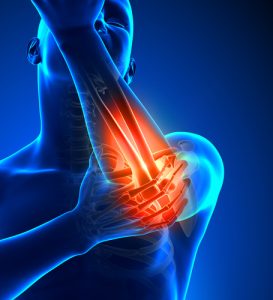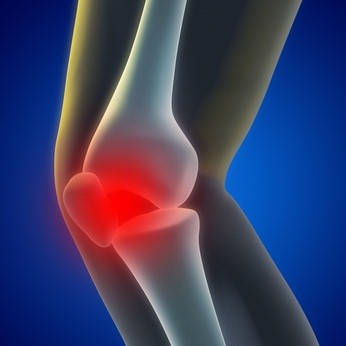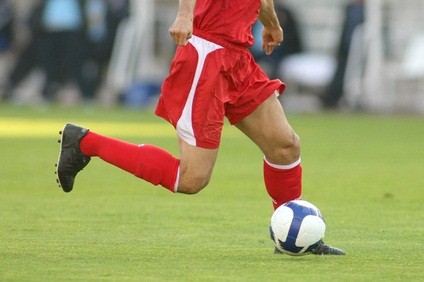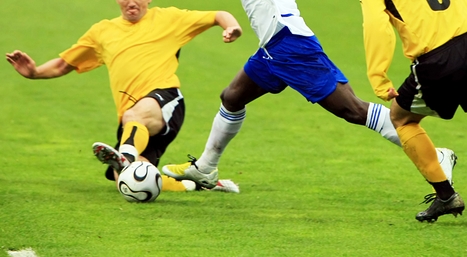Do You Have Painful Joints, Tendons or Ligaments? Get Relief with Platelet Rich Plasma Injections
Platelet Rich Plasma injections are used to help a variety of common conditions including: tennis elbow, Achilles tendinitis and knee osteoarthritis.
Find Relief with Platelet Rich Plasma Injections:
Sometimes, rest, ice, rehabilitation and other treatments fail to provide relief. If you are dealing with chronic joint pain, tendinitis and osteoarthritis, you may want to consider this new treatment option now available.  Louisville sports medicine physician Dr. Stacie Grossfeld is offering Platelet Rich Plasma injections at her office to give patients a new, innovative form of pain relief.
Louisville sports medicine physician Dr. Stacie Grossfeld is offering Platelet Rich Plasma injections at her office to give patients a new, innovative form of pain relief.
PRP Injection Details at Orthopaedic Specialists:
PRP Injections: $435 Charge Cash Only – This treatment option covers a blood draw and PRP related processes. After collecting 10 cc from the arm, it will be spun in a centrifuge and then the platelet rich plasma is injected into the affected joint or area. In total, this fee includes the blood draw, materials used to create the PRP substance, and the actual PRP injection.
For more information about this treatment option, or to make an appointment, call Orthopaedic Specialists at a (502)212-2663. Follow along for more information about platelet rich plasma injections.
What are PRP Injections?
PRP or Platelet Rich Plasma is plasma with more platelets. Plasma is the liquid part of our blood that transports our platelets, and red and white blood cells. Platelets generally comprise about 10% of our blood. In order to prepare the injection, the physician must draw blood from the patient. Then the platelets are separated from the red and white blood cells to increase their concentration through centrifugation. This is then combined with the remaining blood to be used as an injection.
Typically, PRP is injected directly into the injured area. For example, for tendinitis in the knee, the physician will inject a local anesthetic and the PRP directly into the inflamed tissue. Depending on the level of discomfort, most patients do not require more than two injections to find relief. After the injection, the patient may have residual pain for a day, and up to a week. The swelling and stiffness will decrease and the outcome is positive.
PRP injections have been known to treat chronic tendon injuries, acute ligament and muscle injuries, knee arthritis, fractures and even offer relief post-operatively. Some of the best athletes have used PRP injections to treat their injuries. This includes Alex Rodriguez, Brian Urlacher, Kobe Bryant and Tiger Woods. These injections have helped many athletes return to the court, green and fields faster than other forms of treatment.
PRP Research:
 PRP Injections and Partial Ulnar Collateral Ligament Tears, August 4, 2014
PRP Injections and Partial Ulnar Collateral Ligament Tears, August 4, 2014
In the June 2013 issue of American Journal of Sports Medicine, researchers reported some interesting results using PRP injections to heal competitive athletes. According to the study, 30 out of 34 throwing athletes with MRI documented partial ulnar collateral ligament tears got better and were able return to play after receiving platelet rich plasma injections. (The ulnar collateral ligament is situated on the inner side of the elbow). All the throwing athletes had failed a comprehensive course of conservative treatment prior to receiving PRP injections. Based on these orthopedic research findings, this would be another area in orthopedic medicine where PRP can be useful.
PRP or Platelet Rich Plasma More Effective than Placebo, Based on 2013 Sports Medicine Research
 Treatment of Platelet Rich Plasma (PRP) is more effective than placebo for knee osteoarthritis: a prospective, double blind randomized trialAn excellent article written by Dr. Patel, et al was published in February, 2013, in the American Journal of Sports Medicine. The doctors reported that PRP helped to reduce symptoms of osteoarthritis better than a placebo of saline water. The research study is an excellent design with level 1 based evidence. It is the first randomized, controlled trial comparing the treatment of osteoarthritis with PRP to placebo in the knee joint. Researchers had three groups of patients. Group A received one PRP injection, Group B received 2 injections of PRP and Group C received a saline injection. The study was blinded and randomized which means the patients were placed into Group A, B or C randomly and they did not know if they received the PRP or the placebo.The mean platelet count in the PRP patients was 238 x 107. There were no leukocytes in the PRP solution. Read more on our Sports Medicine blog.
Treatment of Platelet Rich Plasma (PRP) is more effective than placebo for knee osteoarthritis: a prospective, double blind randomized trialAn excellent article written by Dr. Patel, et al was published in February, 2013, in the American Journal of Sports Medicine. The doctors reported that PRP helped to reduce symptoms of osteoarthritis better than a placebo of saline water. The research study is an excellent design with level 1 based evidence. It is the first randomized, controlled trial comparing the treatment of osteoarthritis with PRP to placebo in the knee joint. Researchers had three groups of patients. Group A received one PRP injection, Group B received 2 injections of PRP and Group C received a saline injection. The study was blinded and randomized which means the patients were placed into Group A, B or C randomly and they did not know if they received the PRP or the placebo.The mean platelet count in the PRP patients was 238 x 107. There were no leukocytes in the PRP solution. Read more on our Sports Medicine blog.

 A hot topic in ACL research involves which is a more superior operation: double bundle ACL reconstructions versus the single bundle ACL. In the April 2014 Journal of Bone and Joint Surgery Drs. Starman et al. reported on this topic in the "What's New in Sports Medicine" section of the journal. They stated that there is no current evidence to support one procedure over the other.
A hot topic in ACL research involves which is a more superior operation: double bundle ACL reconstructions versus the single bundle ACL. In the April 2014 Journal of Bone and Joint Surgery Drs. Starman et al. reported on this topic in the "What's New in Sports Medicine" section of the journal. They stated that there is no current evidence to support one procedure over the other.
